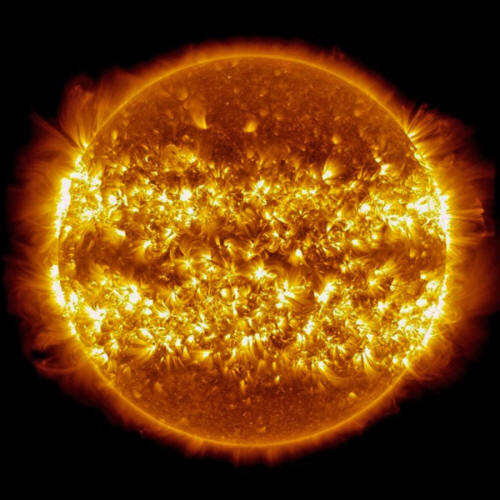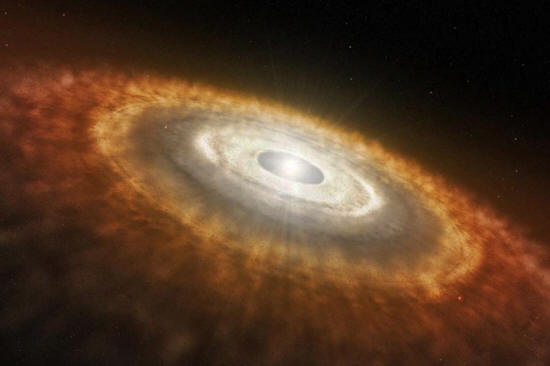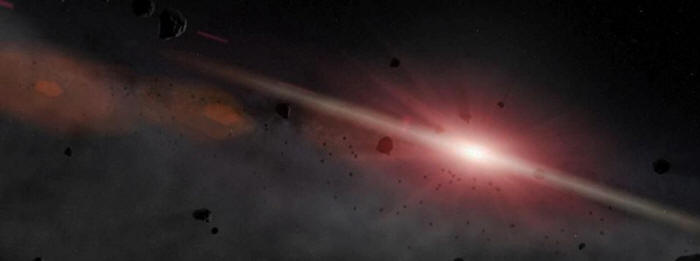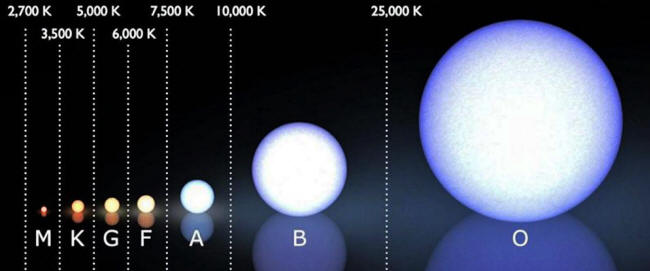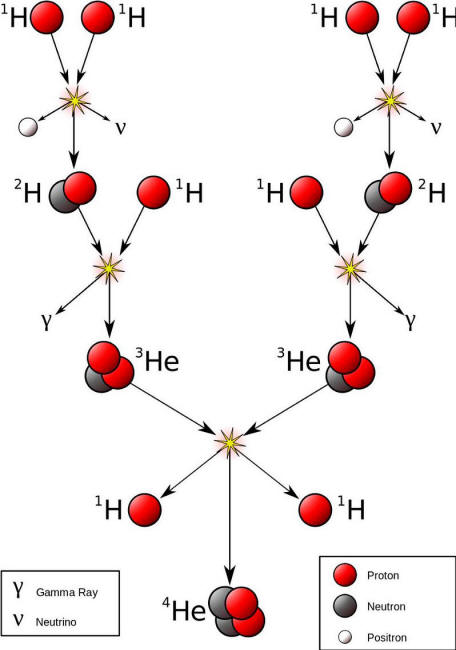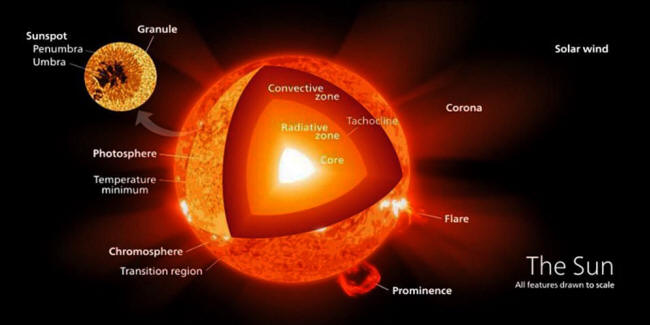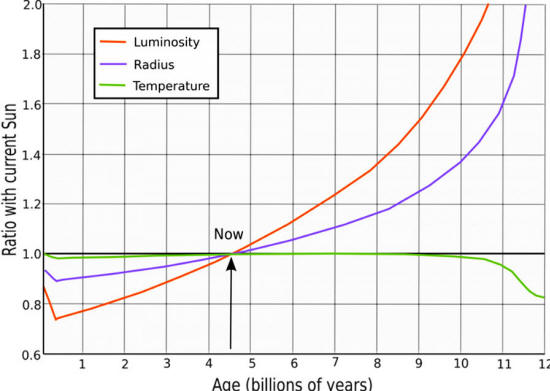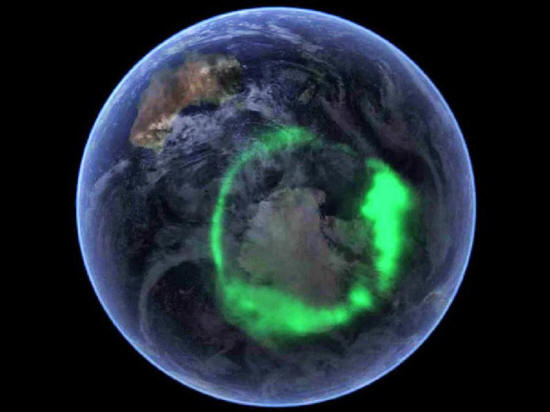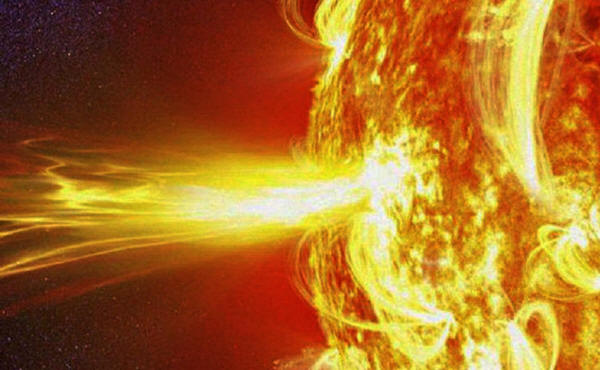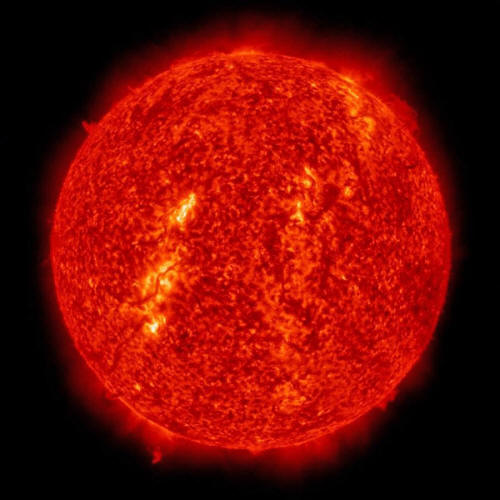|
by Ethan Siegel from Medium Website
Spanish version showing solar outburst/activity over a 365 day period. Without the right amount of nuclear fusion, which is made possible through quantum mechanics, none of what we recognize as life on Earth would be possible. (NASA / SOLAR DYNAMICS OBSERVATORY ATMOSPHERIC IMAGING ASSEMBLY / S. WIESSINGER
POST-PROCESSING BY E. SIEGEL) throughout their life, and the Sun is no exception. Here's what's going on...
In addition to all the
atoms and molecules our planet possesses, our world also has the
right conditions for liquid water on its surface, owing to our
atmosphere and being at just the right distance from our Sun.
All the ingredients we could conceive of wouldn't change the simple fact:
Our Sun contains 99.8% of the Solar System's mass, but gets lighter every day. When enough time goes by, its changes will render Earth uninhabitable.
Here's how it's changing.
a young star surrounded by a protoplanetary disk. There are many unknown properties about protoplanetary disks around Sun-like stars, but the general picture of a dusty disk with heavy elements distributed through it is certainly what gave rise to our planets.
(ESO/L.
CALÇADA)
Surrounding it, a protoplanetary disk formed, complete with the seeds of the Solar System's future planets.
A race then ensued between two competing forces:
When radiation finally wins out, our Sun and the planets can no longer grow, and the matter that would continue to fall in gets blown away, eventually giving rise to our modern Solar System.
were more numerous, and cratering was catastrophic. Once the protoplanetary disk and the surrounding proto-stellar material has evaporated away, the growth of the Solar System's overall mass ceases, and it can only decrease from that point on.
(NASA /
GSFC, BENNU'S JOURNEY - HEAVY BOMBARDMENT)
This also marks, not so coincidentally, the point where our Sun is at its least energetic.
As long as it fuses
lighter elements into heavier ones, it will never give off so little
energy again. Doesn't this seem paradoxical? The Sun, from this
point on, will only get less massive, while the amount of energy it
emits will only go up.
After all, more massive stars do burn hotter and brighter, all things being equal.
with the temperature range of each star class shown above it, in kelvin. The overwhelming majority of stars today are M-class stars, with only 1 known O- or B-class star within 25 parsecs. Our Sun is a G-class star.
(WIKIMEDIA COMMONS USER LUCASVB, ADDITIONS BY E. SIEGEL)
Given that stars get their power from the nuclear fusion of lighter elements into heavier ones, we can actually enumerate what causes a star to give off energy.
The factors are:
If we look at and compare two different stars, the more massive one tends to reach higher core temperatures and have a larger fusion region.
But if we look inside any individual star, we see something else.
for producing the vast majority of the Sun's power. Fusing two He-3 nuclei into He-4 is perhaps the greatest hope for terrestrial nuclear fusion, and a clean, abundant, controllable energy source, but all of these reaction must occur in the Sun.
(BORB /
WIKIMEDIA COMMONS)
The proton-proton chain is how our Sun (and most stars) get their energy, since the end product (helium-4) is lighter and lower in mass than the initial reactants (4 protons).
Nuclear fusion works on
the principle of mass-energy equivalence, where a small fraction of
about 0.7% of the total mass of whatever gets fused is converted
into energy via Einstein's E = mc².
of the surface and interior of the Sun, including the core, which is where nuclear fusion occurs. As time goes on, the helium-containing region in the core expands, causing the Sun's energy output to increase.
(WIKIMEDIA COMMONS USER KELVINSONG)
Without fusion, there's
less radiation, and the helium-rich inner part starts to contract
under its own gravity. But gravitational contraction gives off
energy, meaning that there's a lot of heat/thermal energy getting
transported outward.
This results in the Sun - and all sun-like stars - increasing its energy output as it ages.
The evolution of the Sun's luminosity (red line) over time. The big increase is due to the core temperature and the volume where fusion occurs increasing as the Sun burns through its fuel. (WIKIMEDIA COMMONS USER RJHALL, BASED ON RIBAS, IGNASI (FEBRUARY 2010) SOLAR AND STELLAR VARIABILITY: IMPACT ON EARTH AND PLANETS, PROCEEDINGS OF THE INTERNATIONAL ASTRONOMICAL UNION,
IAU SYMPOSIUM, VOLUME 264, PP. 3–18)
Electrons, protons, and even heavier nuclei can gain enough kinetic energy to be ejected from the Sun, creating a stream of particles known as the solar wind.
The charged particles spread throughout the Solar System and overwhelmingly leave the Solar System entirely, although a few of them will, by a chance alignment in geometry, wind up striking the atmospheres of one of the planets.
When they do, they create the effect known as an aurora, which humanity has measured and observed throughout history.
of ultraviolet Aurora Australis captured by NASA's IMAGE satellite and overlaid onto NASA's satellite-based Blue Marble image. The Earth is shown in false color; the aurora image, however, is absolutely real.
(NASA)
The solar wind, as we measure it today, is roughly constant over time. There are the occasional flares and mass ejections, but they barely factor into the Sun's overall rate at which it loses mass.
Similarly, the Sun's
fusion energy output has increased by about 20% over the course of
its history, but this, too, is a small factor.
We can also extrapolate how much mass the Sun has lost over its entire history since it was born:
which ejects matter out away from our parent star and into the Solar System, is dwarfed in terms of ‘mass loss' by nuclear fusion, which has reduced the Sun's mass by a total of 0.03% of its starting value: a loss equivalent to the mass of Saturn. Until we discovered nuclear fusion, however, we could not accurately estimate the Sun's age.
(NASA'S
SOLAR DYNAMICS OBSERVATORY / GSFC)
That's a lot of material,
for sure, and it adds up over long periods of time. Every 150
million years, the Sun loses roughly the mass of Earth due to the
solar wind, or about 30 Earth masses over the entire lifetime of the
Sun so far.
The Sun's power output is a relatively consistent 4×1026 W, which means it converts approximately 4 million tonnes of mass into energy each second.
From fusion, then, the Sun loses about 250% as much mass, each second, as gets carried away from the solar wind.
Over the course of its 4.5 billion year lifetime, the Sun has lost about 95 Earth masses due to fusion:
generates its energy by fusing hydrogen into helium in its core, losing small amounts of mass in the process. Over its lifetime, it's lost approximately the mass of Saturn by this process: about 2.5 times as much mass as it's lost due to the solar wind.
(NASA /
SOLAR DYNAMICS OBSERVATORY -SDO)
But even at this relatively steady rate, the growth of helium in the Sun's core means that we will heat up here on planet Earth. After about 1-to-2 billion years, the Sun will be burning hot enough that Earth's oceans will boil away entirely, making liquid water impossible on the surface of our planet.
As the Sun gets lighter and lighter, it will counter-intuitively get hotter and hotter.
Our planet has already used up approximately three-quarters of the time we have where Earth is habitable. As the Sun continues to lose mass, humanity and all life on Earth approaches its inevitable fate.
Let's make these last
billion-or-so years count...
|


